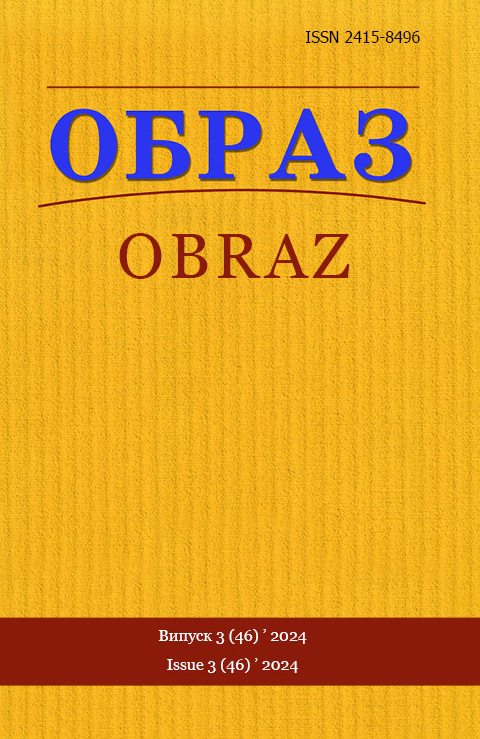Abstract
Introduction. This article is dedicated to the study of the impact of the symbolic space of Ukraine’s territorial communities on enhancing the effectiveness of local governance in the context of decentralization and martial law.
Relevance of the study. In the context of decentralization, the symbolic space of territorial communities serves as a key factor in shaping collective identity and contributes to the preservation of cultural heritage, which is being shaped by newly consolidated territories. It ensures integration at the local level and plays a central role in maintaining the historical values of the communities. The aim of this study is to analyze the components of the symbolic space of communities and determine their significance in strategic communication, aimed at enhancing social integration and cohesion among the population.
Methodology. The study employs a range of methods, including the analysis of scientific sources and the analysis and synthesis of terminology. The method of designing the components of the symbolic space of territories has been applied. An analysis of semiotic identities and communication channels within communities was conducted to identify strategic means of interaction and their impact on social communication and community positioning.
Results. The article analyzes aspects of the design of symbolic space in relation to socio-communicative connections within Ukraine’s territorial communities, considering its structure and components. The study identifies several key aspects: first, the analysis reveals the dynamic nature of symbolic space and its transformation within the community; second, the components of symbolic space are characterized in terms of their functions and interactions; third, the symbolic space is divided into components, allowing it to be transformed into a systematic and manageable structure.
Conclusions. The influence of symbolic space on the collective identity of territorial communities is a significant and stabilizing factor in the context of decentralization and martial law. We believe that the role of symbols is a driving force in activating social cohesion and civic mobility within the communicative relationships of communities. A systematized structure of symbolic space consolidates the population around shared values, which is crucial for effective interaction between different social groups.
References
1. Khitrova, T. V. (2012). Mediini zasoby reprezentatsii dyskursu “istorychna pamyat” v kontseptsii realizatsii derzhavnoi polityky pamyati. Derzhava ta rehiony. [Sotsialni komunikatsii], (4), 133–137.
2. Foucault, M. (1993). Sotsialnyi prostir i symvolichna vlada. THESIS, (2).
3. Levi-Strauss, C. (1968). The Savage Mind. London: Weidenfeld and Nicolson.
4. Polyanska, O. Ye. Rol symvolichnoho prostoru v kulturnomu rozvytku rehioniv Ukrainy, аvailable at: http://dspace.nbuv.gov.ua/bitstream/handle/123456789/11633/10-Polyanska.pdf?sequence=1
5. Dymarets, R. (2000). Vlast symvolov i symvoly vlasti v sovremennoi kulture. Mezhdunarodnye chteniya po teorii, istorii i filosofii kultury, (8), 121-133.
6. Velyka ukrainska entsyklopediya, аvailable at: https://vue.gov.ua/Symvol (date of access: September 25, 2024).
7. Hanaba, S. O. (2016). Symvolichnyi prostir mista yak prostir pamyati. Filosofiya ta politolohiya v konteksti suchasnoi kultury. [ Filosofiya], (6), 4-9.
8. Pankova, O. (2015). Symvolichnyi prostir yak zasib intehratsii ta mobilizatsii liudskykh spilnot. [Ekonomika i upravlinnya], 2(40), 151-157.
9. Rafalskyi, O. (2022). Tsivilizatsiina identychnist ukrainska: istoriya i suchasnist: monohrafiya (Y. Kalakura, Ed.). Kyiv: IPIEND im. I. F. Kurasa NAN Ukrainy.
10. Pro volontersku diyalnist: Zakon Ukrainy vid 19.04.2011 No 3236-VI. Vidomosti Verkhovnoi Rady Ukrainy, (42), st. 435.
11. Prohrama rozvytku OON v Ukraini. (2023). Sotsopytuvannya, аvailable at: https://www.undp.org/uk/ukraine/press-releases/ukrayintsi-staly-chastishe-korystuvatysya-internetom-80-onlayn-shchodnya-sotsopytuvannya (date of access: September 20, 2024).

This work is licensed under a Creative Commons Attribution 4.0 International License.

